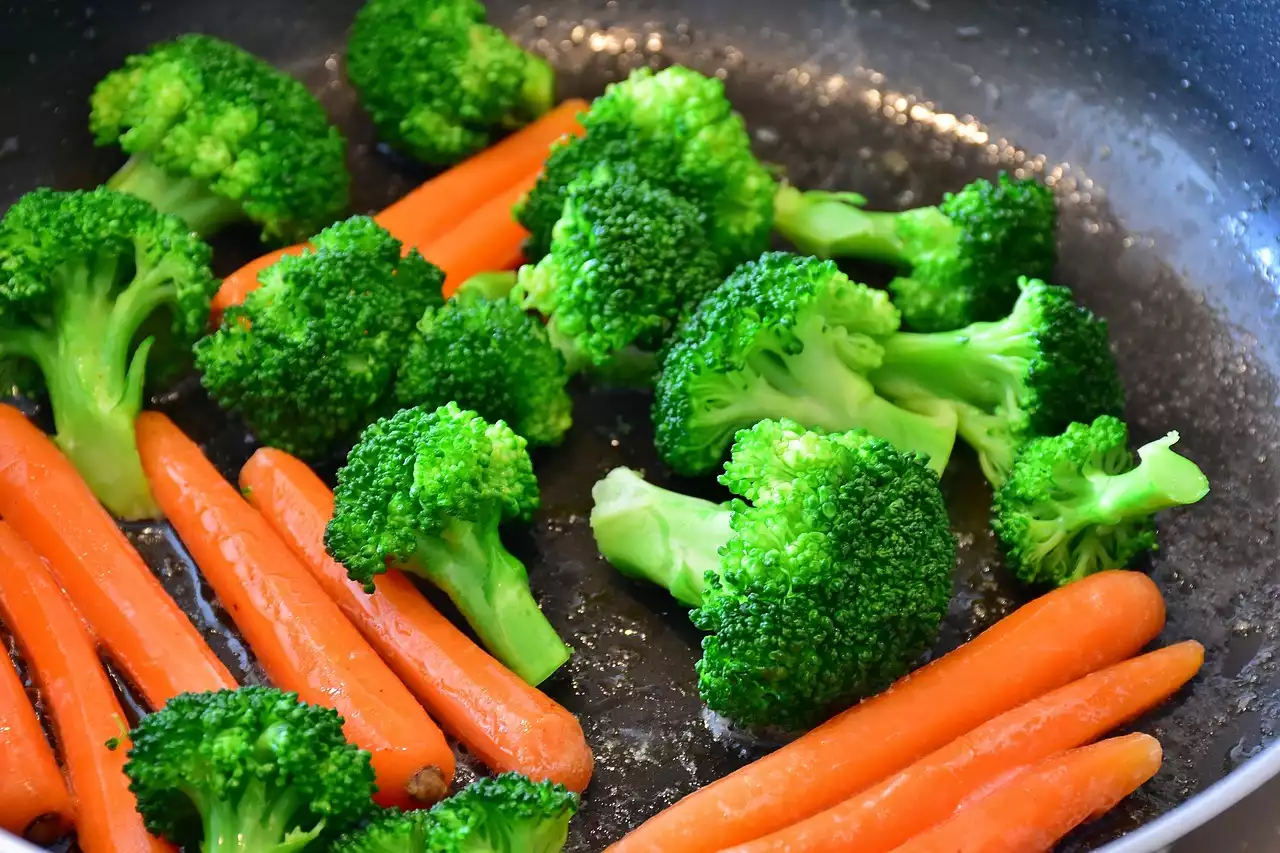If you've ever wondered why some vegetables are so vibrantly colored and perfectly cooked, it's likely because they were blanched. Blanching is a cooking technique that involves briefly boiling food, then plunging it into ice water to stop the cooking process. While it may seem like an extra step, blanching can actually make a big difference in the taste, texture, and appearance of your food. In this article, we'll explain what blanching is, how it works, and why you should try it.
What Is Blanching?
Blanching is a simple yet versatile cooking technique that involves briefly boiling food, then rapidly cooling it in ice water. The term "blanching" comes from the French word "blanchir," which means "to whiten."
Blanching can be used to achieve several different goals. For example, it can be used to:
- Preserve the color and texture of vegetables
- Remove the skins from fruits and vegetables
- Soften or tenderize certain foods, such as tough greens or squid
- Reduce bitterness in certain foods, such as eggplant or some greens
- Remove impurities or excess salt from meat or seafood
The basic steps of blanching are as follows:
- Bring a pot of water to a boil, and add a generous amount of salt. The salt helps to preserve the color and texture of the food.
- Add the food to the boiling water and cook for a short period of time, usually a few seconds to a few minutes, depending on the type of food.
- Remove the food from the boiling water using a slotted spoon or strainer, and immediately plunge it into a bowl of ice water to stop the cooking process.
- Drain the food and pat it dry with a clean towel or paper towel.
Why Should You Blanch Food?
Blanching offers several benefits for the flavor, texture, and appearance of food. Here are some of the reasons why you should consider blanching:
- It preserves the color of vegetables: Blanching can help to preserve the bright, vibrant colors of vegetables such as broccoli, green beans, and asparagus. This is because blanching inactivates enzymes that can cause color loss and also eliminates bacteria that can discolor vegetables.
- It improves the texture of vegetables: Blanching can help to soften or tenderize vegetables and make them more palatable. It can also help to remove excess starches from root vegetables, such as potatoes.
- It removes the skins from fruits and vegetables: Blanching is a useful technique for removing the skins from tomatoes, peaches, and other fruits and vegetables. It can make peeling these foods much easier and quicker.
- It reduces bitterness: Certain vegetables, such as eggplant, can be bitter if not prepared correctly. Blanching can help to remove some of the bitterness and make these foods more enjoyable.
- It removes impurities and excess salt: Blanching is a useful technique for removing impurities and excess salt from meat, poultry, and seafood. It can also help to remove any unwanted flavors or odors.
How to Blanch Food
Blanching is a relatively simple cooking technique, but there are a few key tips to keep in mind for best results. Here's how to blanch food:
- Prepare the food: Wash the food thoroughly and cut it into small, uniform pieces if needed.
- Boil the water: Bring a large pot of water to a rolling boil. Add a generous amount of salt to the water, which helps to preserve the color and texture of the food.
- Blanch the food: Add the food to the boiling water and cook for a short period of time, usually a few seconds to a few minutes, depending on the type of food. Be sure not to overcrowd the pot, as this can lower the temperature of the water and result in uneven cooking.
- Cool the food: Using a slotted spoon or strainer, remove the food from the boiling water and immediately plunge it into a bowl of ice water. This stops the cooking process and helps to preserve the color and texture of the food.
- Drain and dry the food: Once the food has cooled, remove it from the ice water and drain it thoroughly. Pat it dry with a clean towel or paper towel.
Variations on Blanching
There are several variations on the basic blanching technique that can yield slightly different results:
- Blanching in broth: Instead of blanching in plain water, you can blanch food in broth or stock to add extra flavor. This is a useful technique for soups and stews, as it can help to build a flavorful broth.
- Blanching with baking soda: Adding a small amount of baking soda to the blanching water can help to preserve the color of certain vegetables, such as green beans and asparagus.
- Shocking: After blanching, some recipes call for "shocking" the food in ice water for an extended period of time. This can help to enhance the texture and flavor of the food.
- Double blanching: For certain foods that require a more thorough cooking, such as root vegetables, a second round of blanching may be necessary.
Conclusion
Blanching is a simple yet effective cooking technique that can enhance the taste, texture, and appearance of your food. By briefly boiling food and then rapidly cooling it, blanching can help to preserve the color and texture of vegetables, remove the skins from fruits and vegetables, soften or tenderize certain foods, reduce bitterness in certain foods, and remove impurities or excess salt from meat or seafood.
With a few basic tips and techniques, blanching is a versatile cooking method that can be used in a wide range of recipes. So the next time you're preparing a meal, consider blanching your vegetables or seafood for a delicious and visually appealing result.





